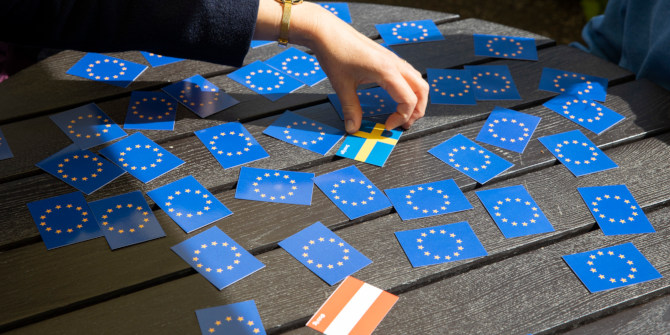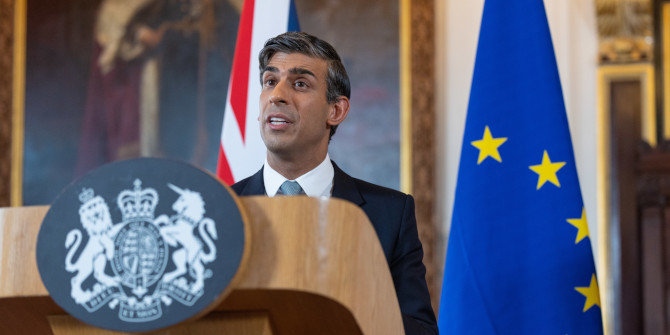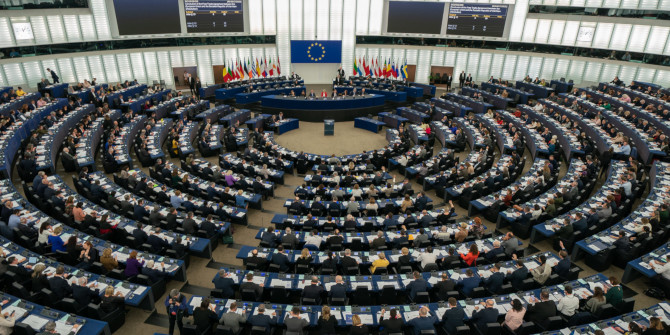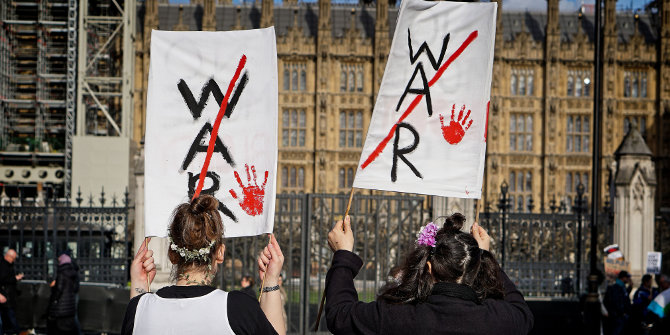As the EU’s diplomatic service, the European External Action Service (EEAS) has an important role to play in EU climate diplomacy. Drawing on a new study, Joseph Earsom and Tom Delreux write that in addition to coordinating and mainstreaming EU climate diplomacy, the headquarters of the EEAS has also become increasingly entrepreneurial since the Paris Agreement in 2015.
Since its establishment in 2011, the European External Action Service (EEAS) has increasingly sought to establish itself as a coordinator of EU climate diplomacy efforts regarding United Nations Framework Convention on Climate Change (UNFCCC) negotiations while also “mainstreaming” climate concerns into all aspects of EU foreign policy. In other words, it has tried to make sure that climate is not just a niche issue for environmentalists but rather a subject of diplomatic importance. Moreover, EU Delegations in third countries, which fall under the auspices of the EEAS, have played an important role in the EU’s bilateral climate outreach.
In the last few years, the climate diplomacy work of the Brussels-based EEAS headquarters has taken on increased importance with the European Green Deal and the EU’s commitment to incorporate climate concerns into all aspects of EU internal and external policies, in line with the Union’s 2050 binding climate neutrality target. This coincides with developments at the global level, where the urgency of climate diplomacy has been underscored by the ever-visible consequences of rising emissions, insufficient mitigation efforts and geopolitical tensions and conflict: all of which have spilled into already-complicated UNFCCC negotiations.
Our recent research suggests that the EEAS headquarters has, over the past decade, evolved to become an important player in EU climate diplomacy system, alongside the EU member states and the European Commission. Notably, in the leadup to COP26 in Glasgow in 2021, it played a key role in driving EU involvement in two plurilateral initiatives on specific climate issues that then fed back into the UNFCCC negotiations: the Global Methane Pledge and the first Just Energy Transition Partnership (JETP) with South Africa. In that sense, it has shown signs of moving from a “behind the scenes” player to an outward entrepreneur in EU climate diplomacy.
Considering the high stakes of international climate politics in 2023 and the importance of issue-specific plurilateral initiatives in EU climate diplomacy, how can these findings shape our expectations for EU climate diplomacy at COP28 and beyond?
Coordinating and mainstreaming
When comparing the leadup to COP21 in 2015 and COP26 in 2021, we found that the EEAS headquarters has consistently carried out its key activities of coordinating and mainstreaming climate diplomacy. While the scope of these activities has slightly evolved, the coordination and mainstreaming functions remain.
With respect to coordination, the EEAS headquarters serves as a liaison between the engine room of the EU’s climate negotiations – the Working Party on International Environmental Issues – Climate Change (WPIEI-CC) – and other foreign policy actors in the EU. While the EEAS headquarters has long followed the work of the WPIEI-CC and translated EU negotiating positions into diplomatic messaging, it has moved away from a technical coordinator to more of a “big picture” approach. The EEAS headquarters team is thus no longer seeking to repeat the EU’s UNFCCC positions but rather complement their work with a broader foreign policy relevance.
Regarding mainstreaming, in the leadup to the Paris Agreement, the EEAS headquarters was tasked with getting EU diplomats interested in climate issues and finding suitable international forums to raise climate issues. That work was largely successful, with climate change now largely enshrined in the EEAS outreach. Mainstreaming of climate considerations in other diplomatic activities has continued in the post-Paris era, now with a focus on the external dimension and consequences of the European Green Deal.
Exploiting plurilateral windows of opportunity
While the EEAS headquarters’ work in coordinating and mainstreaming climate diplomacy has continued, its role in EU climate diplomacy has also partially changed. We found evidence of an increasingly active and entrepreneurial aspect in the leadup to COP26. Indeed, the EEAS headquarters, led by then-Ambassador at Large for Climate Diplomacy Marc Vanheukelen, strategically sought out opportunities on the sidelines of the UNFCCC negotiations to work with smaller groupings of states on specific issues, like finance and potent non-CO2 greenhouse gas emissions such as methane, which then fed momentum back into the UNFCCC negotiations.
Notably, the EEAS was instrumental in the EU’s involvement in the Global Methane Pledge and the Just Energy Transition Partnership with South Africa. Despite criticisms, these two plurilateral initiatives appear largely institutionalised in global climate governance two years later. Ambassador Vanheukelen and his team identified these two issues – methane emissions and decarbonising developing countries’ energy supplies – as actionable, practical solutions and then collaborated with the US climate envoy to develop the initiatives. The EU then adopted them as non-binding political declarations and has since formalised its involvement with both.
Yet what could explain this entrepreneurial shift in the EEAS headquarters’ climate diplomacy? Our research suggests four potential factors. First, the establishment of the post of Ambassador at Large for Climate Diplomacy within the EEAS in 2019 created a focal point that could reach out to diplomatic counterparts, such as US Special Envoy John Kerry.
Second, the personal working style of Ambassador Vanheukelen and his experience at the World Trade Organization favoured identifying small plurilateral settings to advance EU objectives. This corresponded with the opening of such initiatives at the international level, which could then feed back into the UNFCCC.
Third, increased resources at the EEAS headquarters dedicated to climate diplomacy – going from two people in 2015 to at least twelve in 2022 – provided support for expanded activities. Finally, the non-binding nature of plurilateral initiatives such as the Global Methane Pledge and the Just Energy Transition Partnership gave the EEAS the manoeuvrability to negotiate informally, as opposed to engaging the formal EU decision-making channels.
COP28 and beyond
Our analysis shows that, since the adoption of the Paris Agreement in 2015, the EEAS headquarters has become a more important player in EU climate diplomacy. It has moved beyond its traditionally “behind-the-scenes” involvement. The EEAS’s enhanced coordinating and mainstreaming activities as well as its newly developed entrepreneurial role demonstrate its improved potential to help the EU push for its international climate objectives in today’s tense geopolitical context.
However, it is unclear if the EEAS headquarters can continue to take on the same leading and entrepreneurial role in EU climate diplomacy in 2023 that it played leading up to COP26 in 2021. Indeed, our findings suggest that much of this new role was facilitated by the creation of the post of Ambassador at Large for Climate Diplomacy and the personal working style and experience of the postholder.
Marc Vanheukelen retired in the summer of 2023. He has since been replaced by a new Special Envoy for Climate and Energy Diplomacy, Anthony Agotha, who joined the EEAS from the cabinet of former European Commission Executive Vice President Frans Timmermans. Agotha is an experienced diplomat and EU official who incarnates the “European Green Deal” perspective from the Commission. However, it remains to be seen how he will fill the shoes of his predecessor and whether the entrepreneurial ambition of the past years has been institutionalised at the EEAS headquarters.
With so many contested issues on the agenda of COP28, such as fossil fuels and associated subsides, loss and damage financing, and renewable energy, finding ways to complement and insert momentum into the negotiations is an important priority for the EU and thus an opportunity for the EEAS. Whether or not the EEAS can capitalise on this opportunity remains to be seen. Its actions will provide insight into its role within the EU climate diplomacy system going forward.
For more information, see the authors’ accompanying paper in European Foreign Affairs Review
Note: This article gives the views of the authors, not the position of EUROPP – European Politics and Policy or the London School of Economics. Featured image credit: European Union





